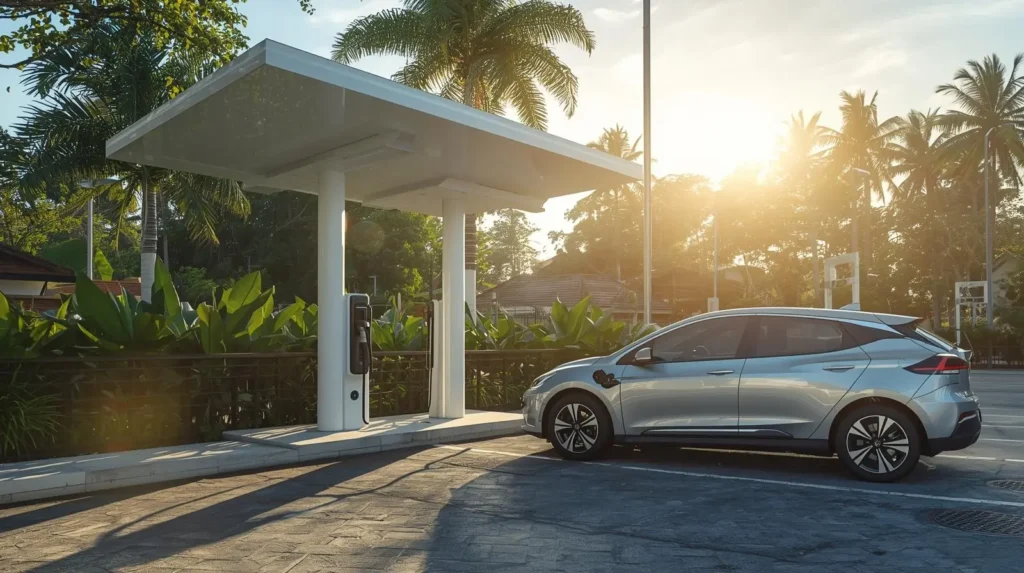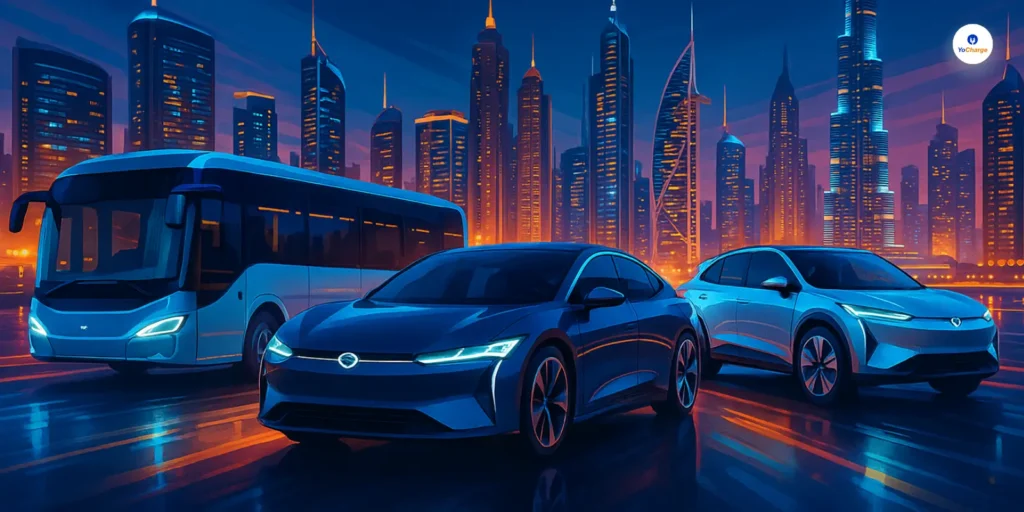
EV Battery Recycling: Driving an electric vehicle (EV) costs less than a gas-powered car. EVs also impact the environment less, making them eco-friendly. From production to the road, EVs save money and reduce pollution.
But what happens to EV batteries after use?
Gas vehicles have a long-established recycling process. They are often refurbished, resold, and recycled after many years. EVs are different because of their large lithium-ion batteries.
While many EV parts are recyclable, battery recycling needs special attention. It raises questions about the future of EV battery recycling.
This article explores every aspect of EV battery recycling, from its importance to the latest methods, challenges, and benefits.
What is EV Battery Recycling?
EV battery recycling refers to the process of reclaiming and reusing materials from spent or defective EV batteries. These batteries, mainly lithium-ion, contain valuable metals like lithium, cobalt, nickel, and manganese.
Recycling helps recover these materials for reuse in new batteries or other industries.
Why is EV Battery Recycling Important?
The adoption of electric vehicles is rising rapidly. By 2030, over 250 million EVs may be on the roads globally. This surge will generate millions of used batteries annually.
Without proper EV battery recycling, these batteries could harm the environment by releasing toxic chemicals into the soil and water. Recycling mitigates these risks and supports a circular economy.
Key Benefits of EV Battery Recycling
- Environmental Protection: Prevents hazardous materials from polluting the environment.
- Resource Conservation: Recovers scarce metals like lithium and cobalt for reuse.
- Economic Opportunities: Creates jobs and promotes sustainable industries.
- Energy Efficiency: Saves energy compared to mining raw materials.
What Happens to EV Batteries at the End of Life?
EV batteries lose efficiency after several years of use. Once their performance drops below 70%, they are deemed unfit for vehicles. However, these batteries are not entirely useless.
Some are repurposed for energy storage systems, while others undergo EV battery recycling to recover valuable components.
Also Read: The Lifespan of an EV Battery
Current State of EV Battery Recycling
The current state of EV battery recycling is still developing. As of 2022, recycling plants can process 105,150 tons of materials annually, but most of it comes from manufacturing scrap, not end-of-life EV batteries.
A typical lithium-ion EV battery lasts 10 to 20 years. Since major EV manufacturers have only been producing cars for about a decade, most EVs are still running strong. By 2030, an estimated 26.4 million EVs will be on the road.
Recycling facilities can handle this demand until at least 2036, and potentially until 2044 with new plants. So, while challenges may come, we are not there yet.
The EV Battery Recycling Process
The EV battery recycling process focuses on safely recovering valuable materials like lithium, cobalt, and nickel. The complete process includes 4 major steps:
Step 1: Collection and Transportation
Recycling begins with the collection of used EV batteries. Manufacturers, dealerships, and recycling companies coordinate efforts to transport batteries to recycling facilities.
Step 2: Battery Disassembly
At the facility, experts disassemble the batteries into individual components. This process involves separating metals, plastics, and chemicals.
Step 3: Material Recovery
Advanced techniques to recover valuable materials:
- Pyrometallurgy: High-temperature processes extract metals like cobalt and nickel.
- Hydrometallurgy: Chemical solutions dissolve and isolate valuable metals.
- Direct Recycling: Preserves the structure of cathode materials for reuse in new batteries.
Step 4: Reuse or Repurposing
Recovered materials are refined and repurposed for new batteries, electronics, or other applications. The recycling process ensures minimal waste and maximum resource utilization.
Challenges in EV Battery Recycling
EV battery recycling faces several hurdles that impact efficiency and sustainability. Its challenges include:
High Costs of Recycling
Recycling EV batteries is expensive due to complex disassembly and material extraction. Establishing recycling infrastructure requires significant investments.
Limited Recycling Facilities
Most regions lack sufficient facilities for EV battery recycling. Expanding these facilities is essential to meet growing demand.
Variability in Battery Designs
Each EV manufacturer uses unique battery designs. This variability complicates standardization in the recycling process.
Environmental Concerns
Although recycling reduces waste, it still consumes energy and produces emissions. Improving energy efficiency is vital for sustainable EV battery recycling.
Lack of Awareness
Many EV owners remain unaware of proper battery disposal methods. Increased public awareness is crucial for better recycling participation.
How You Can Contribute in EV Battery Recycling?
You can play a vital role in EV battery recycling by following proper disposal methods and supporting recycling initiatives. You can contribute to battery recycling by following the below actions:
Proper Battery Disposal
Dispose of EV batteries through certified recycling programs. Never discard them with regular waste to avoid environmental damage.
Support Sustainable Practices
Choose brands that prioritize EV battery recycling. Encourage manufacturers to adopt eco-friendly designs and recycling systems.
Stay Informed
Understand local regulations and recycling options. Spread awareness about the importance of EV battery recycling among friends and family.
Opt for Energy Storage Solutions
Consider reusing spent EV batteries for home energy storage. This reduces waste and supports renewable energy usage.
Also Read: Fast Charger vs Rapid Charger
Future of EV Battery Recycling
The future of EV battery recycling looks promising, with strong innovation potential. As EV adoption grows, so will the need for recycling, with the market predicted to reach $1.9 billion by 2030.
Governments are introducing policies to support recycling, such as the EU’s 50-70% recycling rate mandate. Manufacturers like Tesla and Nissan are embracing circular economy initiatives, investing in closed-loop systems.
Additionally, second-life applications for batteries, like renewable energy storage, are extending their use.
Technological advancements, including solid-state batteries, could simplify recycling and make the process more sustainable and profitable in the future.



